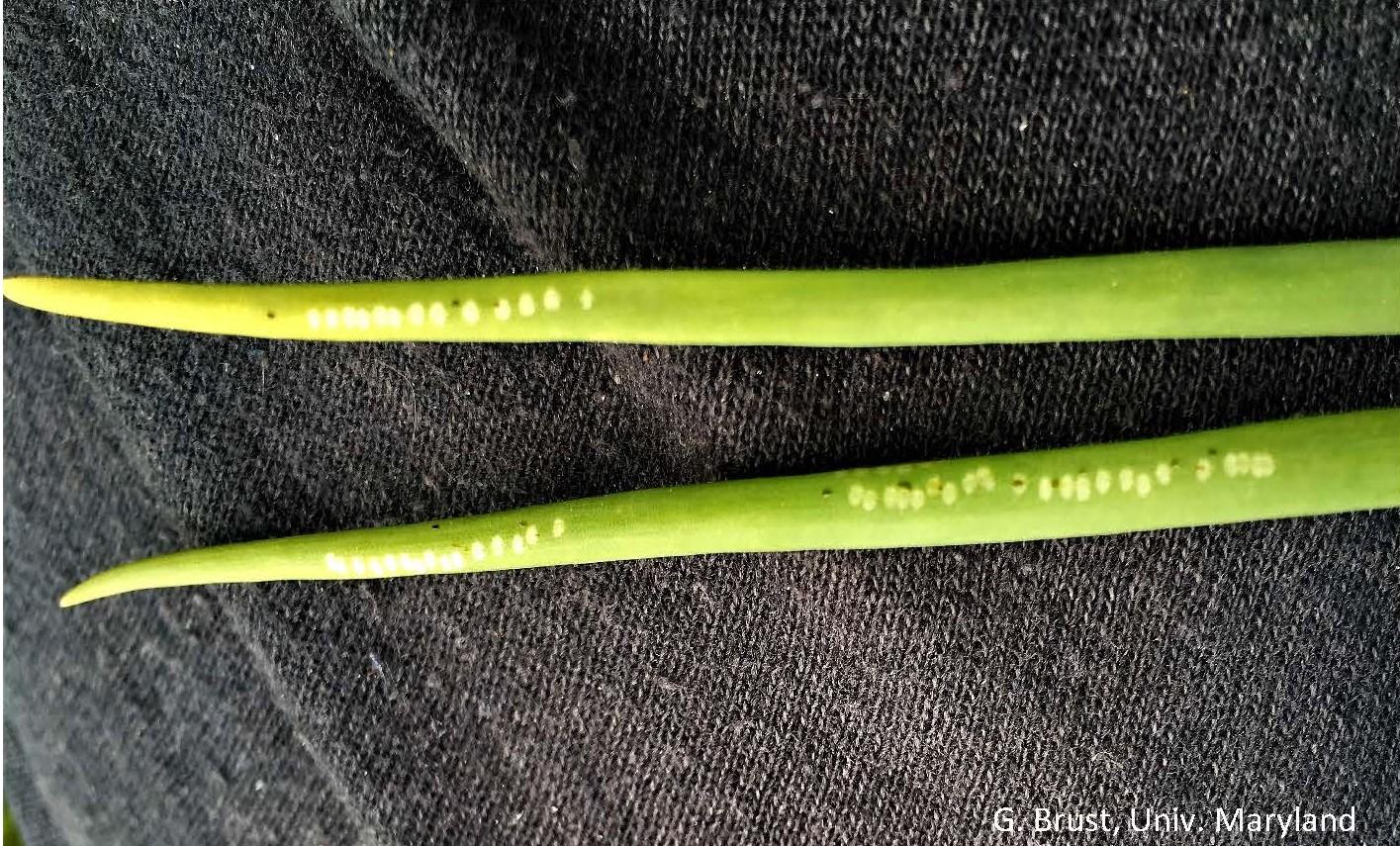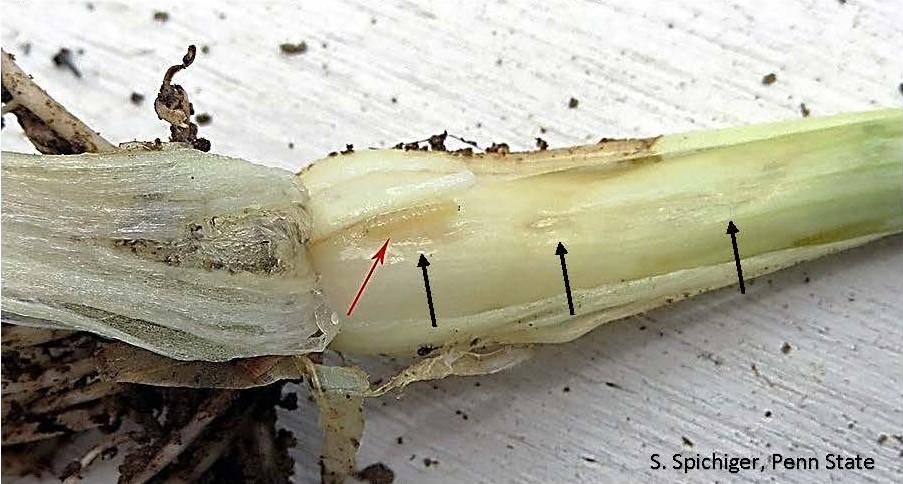Allium Leaf Miner - Again - Really
I know, I know I wrote one of these just a few weeks ago and here it is again. Why a second article about this pest? I am writing now because I was a bit amazed and alarmed by some field observations in the last 2 weeks. I was on a farm in western Howard county on April 17th in a fairly recently planted onion field with the grower (keeping a safe social distance) looking for tell-tale signs of Allium leaf miner. Allium leaf miner Phytomyza gymnostoma tell-tale marks consist of several small round white dots in a row that appear on the middle towards the end of leaf blades (fig. 1) of their preferred hosts of leeks, onions, garlic and other Allium species. The grower and I did not see any signs of the Allium leaf miner on our inspection of this field. This did not surprise me as the grower rotates their field of onions each year, no Allium fields have been found with the leaf miner in this county or any neighboring counties so far and these transplants were clean to begin with. Less than a week later on April 23rd I was in this same field and was amazed to find the tell-tale marks throughout the field. The infestation was not heavy, but the oviposition marks could be found from one end of the field through the middle section and down to the other end of the field (around a quarter of an acre of onions). And this happened in less than 1 week. So I am a bit alarmed about this sudden appearance of the fly in this field of onions. The grower did the right thing and closely watched this new planting of onions, I just did not expect to see such a rapid infestation. This fly must have been present and active in the area before the onions went out. It is important therefore that growers in northern/central Maryland watch their onion fields closely for this pest. One possible reason for the high activity of the Allium leafminer this season is the below average temperatures we have had throughout April. This pest prefers cooler temperatures to remain active. Just received word of another grower in central Montgomery Co. that also has found them on their onions, leeks and garlic in the last few days. So this pest is spreading rapidly and needs to be watched for. To go over recommendations for this pest again: New transplants or seedings of onions, leeks or garlic should be watched closely for the tell-tale signs of the fly’s damage which are made by the female’s ovipositor. When eggs hatch the larvae at first mine leaves (fig. 2) and then move down to the bulbs and leaf sheathes (fig. 3) where they feed and eventually pupate. Pupae will undergo a summer aestivation (type of hibernation, temperatures are too warm for them to be active) and only emerge again in late September. Penn State has good information about the new pest which can be found at: Penn State Allium Leafminer Pest Alert page. You can cover any just-transplanted Allium planting with a row cover (but don’t wait too long after transplanting) to keep the flies off or if needed treat with insecticides. Penn State has found efficacy using neonicotinoids (Scorpion, Assail), diamides (Exirel), spinosyns (Entrust, which is OMRI-labelled), and pyrethroids. A spreader-sticker is recommended when applying insecticides to any Allium crop.


